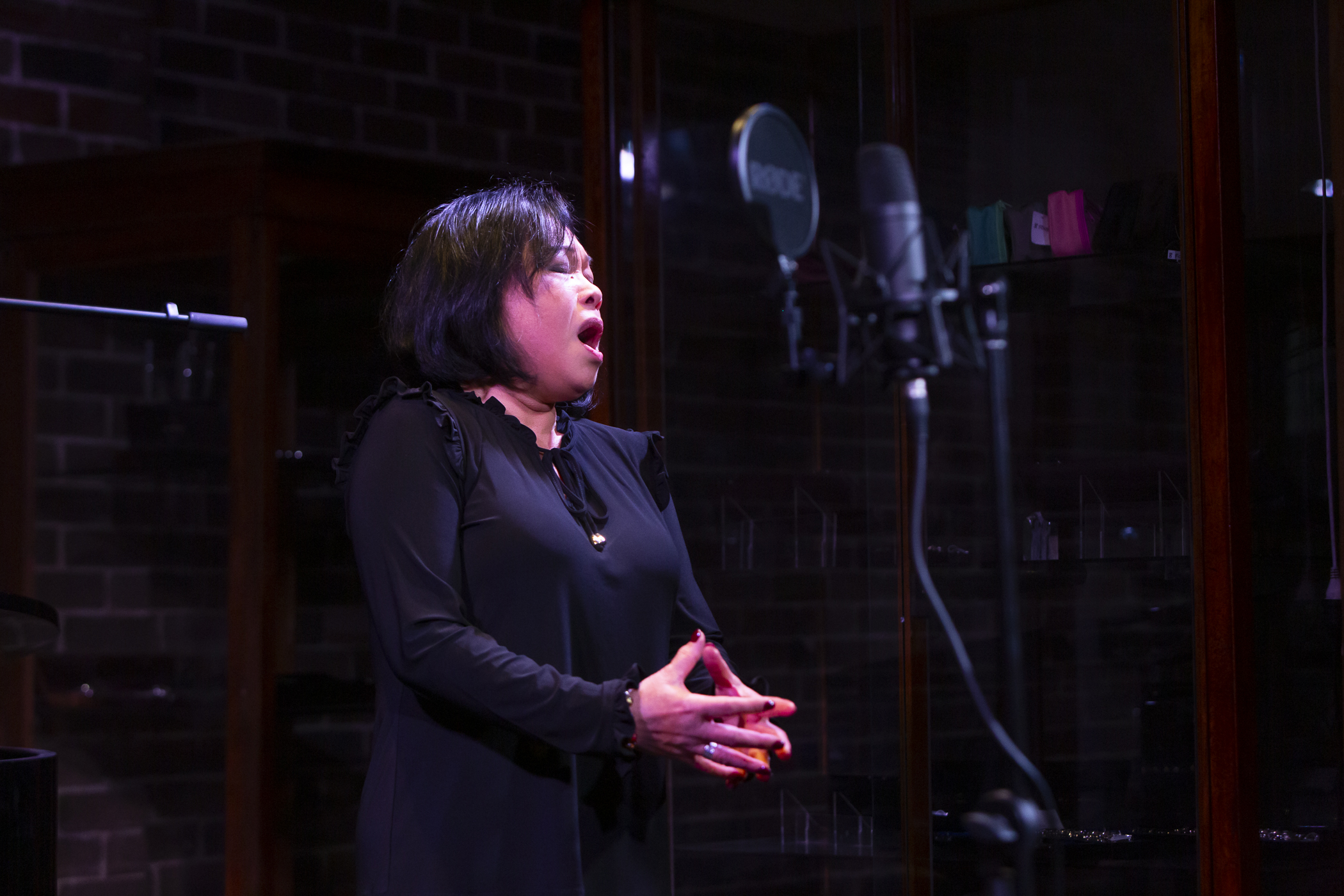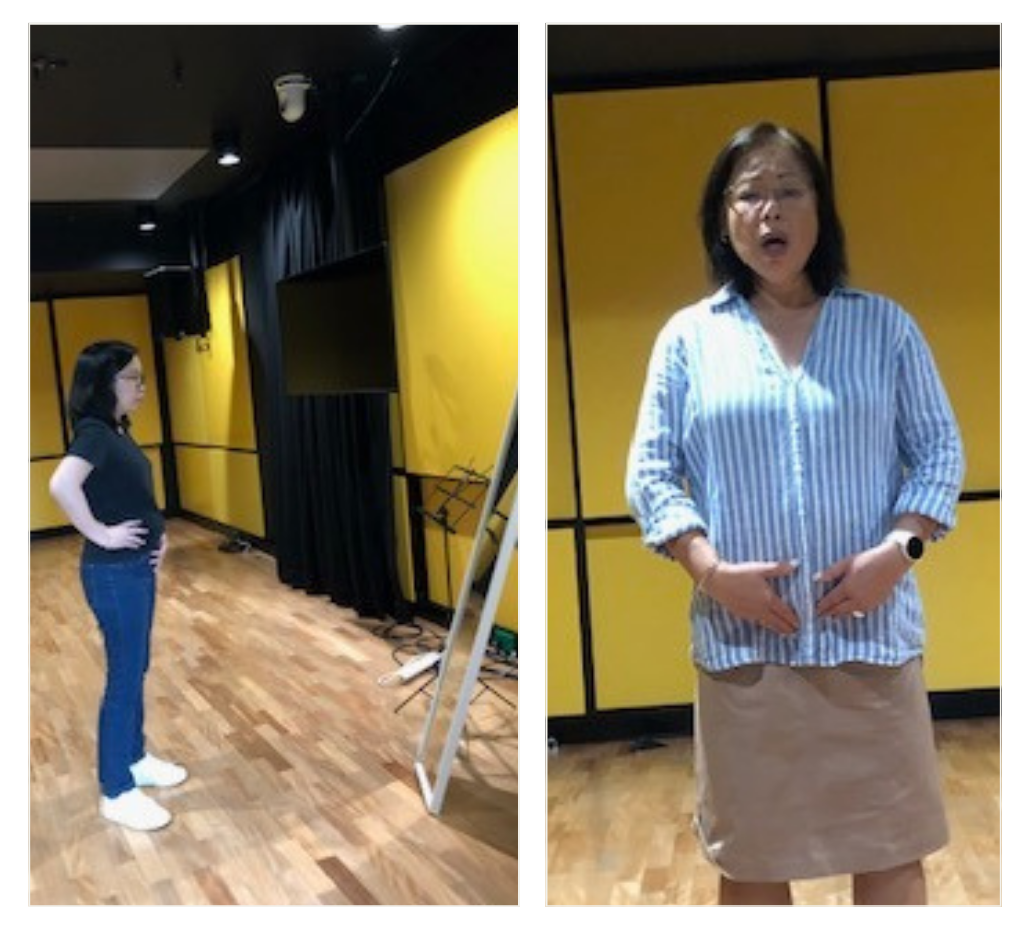Sing your own song: how singer-songwriters can improve their craft
Part of learning to sing is learning the art of song interpretation: how to inhabit the words and emotions of a song to communicate them to an audience. For singer-songwriters, telling your story through your own songs is a powerful way to express yourself and connect with an audience. But it comes with its own set of challenges.
When I coach singer-songwriters, we often work on finessing these areas of singing and performance:
Getting the right register
Some singers write songs beyond their register range. In these cases, I’ll encourage them to adjust the pitch of certain song sections, or we’ll work on exercises to extend their vocal range. Often, I use the particular section of their song that they’re struggling with for range extension practice.
In songwriting, high notes are often where the emotional point is, so it’s important to have proper breath support here. Breathy upper tones can have limitations when you want to emphasise a feeling.
Diction and consonants
Because original material is less well known than popular songs, proper enunciation of words is vital so an audience can hear and understand the story. Working on consonants is an important part of this. While the melody is mainly carried on vowel sounds, it’s consonants that make them into words, bringing meaning. I work with my singer-songwriter students on both initiating and concluding a consonant sound. At the same time, for contemporary music styles, you don’t want a clipped, over-enunciated sound to your singing. It’s a balancing act.
Making room for riffs and improvisation
One of the joys of song interpretation, whether it’s singing someone else’s or your own, is vocal improvisation and ad-libs. You don’t have to stick to a song note for note, and some singers need encouragement to build confidence around exploring different ways to sing a phrase. To help with this, we might revisit vocal agility exercises and I’ll use a section of their song to make up an exercise.
Performance craft
Because a singer-songwriter is so close to their songs, they may not pay as much attention to its performance. It reflects a part of them, so why not just sing it as themselves?
But performance is about projection, sometimes even exaggeration. So, for a singer-songwriter to perform their own music it requires ‘bigger’ gestures, facial expressions, movement and intention to effectively convey meaning. Sometimes, emotional connection to their words is missing. So, while they know the why, who, and what of their stories, we need to pick these apart when working on the performance. Then we work on audience connection, and how to communicate the emotional content through the voice and appropriate gestures.
From playing other people’s music to their own
Two of my current singer-songwriter students, Gemma Lipman, AKA Icevena,
and Ange Roze Burke, have both been learning and playing other people’s music since childhood, which led them to explore writing their own songs. For both, it’s a satisfying outlet for creative self expression.
“I like that I am being asked to share my original songs with crowds. Being paid to do that shows people value my art. I like creating new sonic worlds with my electronic production and then telling a story with my voice,” Gemma says.
“It’s satisfying to have a piece of music that means something to you [and] other people can relate to,” Ange observes. “My goal is to create a safe space for all kinds of people and create a community for those that feel something when they hear my music.”
When Gemma and I first started working together, she didn’t know the fundamentals of healthy singing, so by building her vocal technique and performance craft, Gemma now feels confident to experiment more with her songwriting.
“It has opened up more creative options for me which is very exciting. And it is very satisfying to connect with an audience now through singing,” she says.
Gemma recently played a show at Sydney Olympic Park, despite recovering from COVID and the flu, and some logistical hiccups at the event, but her singing training gave her a good foundation to get through. “My voice was almost non-existent on the day but I warmed up using techniques Kathleen taught me. By the time I was performing, my voice sounded great all things considered,” Gemma recalls. “While I was singing, a four-year-old tried to pull out the cables from the mixer. I didn’t miss a beat – I kept singing without forgetting the words. This confidence and focus is something I have developed from Kathleen’s encouragement and wisdom.”
Ange also needed to correct her vocal technique to do less damage to her voice. Recently, we’ve been working on her insightful song, ‘Monster’, which is about the fear of being loved and of loving someone. Gradually, we’ve worked on each line, discussing who she is singing to and how that might be perceived by a listener.
“Workshopping ‘Monster’ has drastically changed the way I perform it. Each line is there for a reason. As the story unfolds, each line adds depth and layers,” Ange says. “Songs are journeys, it’s so important to take the listeners through the highs and lows with you. Kathleen helped me dissect each line and really make sure I deliver it in a way that listeners can grasp. ‘Monster’ was already a very special song to me, and now it’s got that added depth.”
Kathleen Connell has coached many gigging singer-songwriters to achieve stronger performance, and greater joy from their craft. Browse her in-person or online singing lesson packages and to find out more, get in touch.





